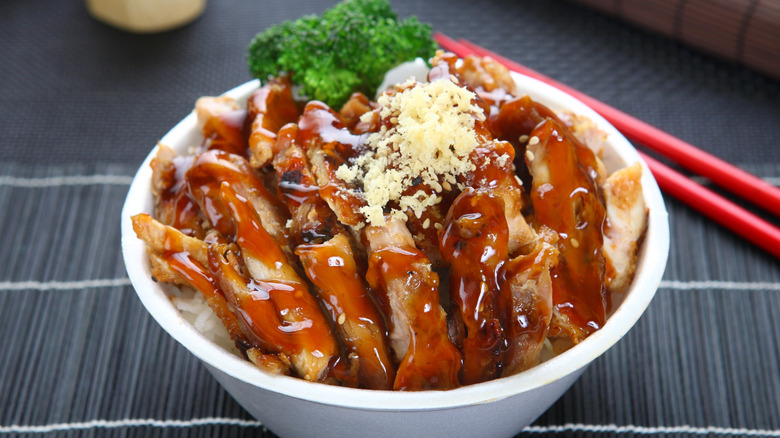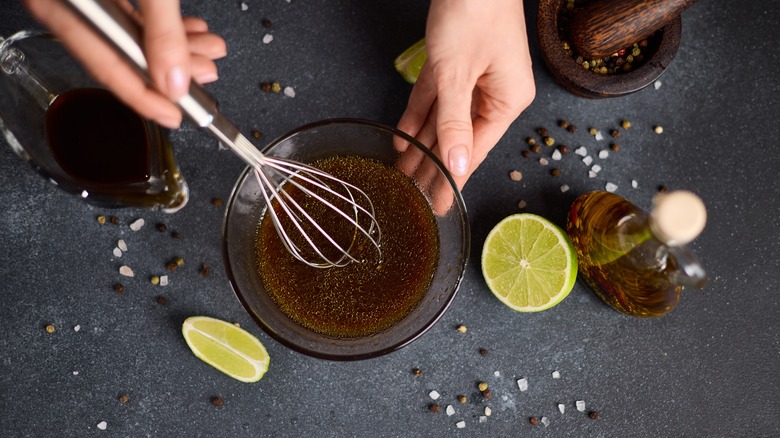The One Simple Ingredient You Need To Upgrade Store-Bought Teriyaki
The complex and well-rounded flavors of Japanese cuisine are something we're perpetually trying to recreate at home. One of the most recognizable Japanese sauces is teriyaki — a thick, glossy sauce that's a perfect blend of sweet and savory. Even though at-home teriyaki sauce is simple enough to make, sometimes all we have in the fridge is a bottle of store-bought teriyaki. Not to throw shade at any teriyaki brands, but somehow the store-bought sauce never tastes quite right, you know? It's often too sweet and falls a bit flat, leaving you wanting just a bit more. It needs a gentle kick, but you can't put a finger on exactly what is missing. Turns out, what's missing is a hint of acidity.
Acid is incredibly underrated and easily overlooked in home cooking. You might worry it will make your dish too tart, but acid is very adaptable and can actually balance out both sweetness and bitterness. If the store-bought teriyaki sauce is too sweet, the splash of acid will tone it down and add a new layer of flavor. If it's too bitter, acidity will reduce the sharpness and bring it back to balance. You could say that acidity "wakes up" the sauce and makes it feel livelier (and lovelier) to the taste buds. It adds freshness and amplifies all the flavors in your teriyaki sauce.
Find the right acid for your teriyaki dish
Our top choice for an acid you can add to your store-bought teriyaki has to be mirin. It's a slightly sweet rice wine that's often included as an ingredient in the sauce, so it will pair nicely with the existing flavors (exhibit A: this teriyaki chicken). We also love the idea of rice vinegar because it's another staple ingredient in Japanese dishes and will taste very familiar to you. Try out this combination in our teriyaki tofu and mushroom stir-fry. If your pantry is lacking these Japanese-specific acidic ingredients, there's no need to worry; you can still do just fine with some lemon, lime, or apple cider vinegar. Pineapple teriyaki chicken, for example, makes great use of lime and even pineapple juice! The best acid for your teriyaki dish is ultimately the one you have available at home.
Whichever acid you decide to go for, the single rule for adding it to your sauce is to do it slowly. You don't want sourness to be overpowering — you're only looking to balance out the intense flavors. You'll need a small amount of acid to improve the taste, so test the flavor after each addition and repeat the process until your sauce (or dish) tastes the way you're hoping for. If you still feel like something is missing, this extra ingredient can bridge the remaining gap.

